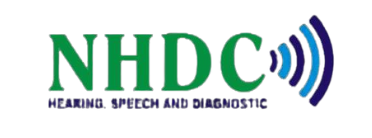Hearing machines, also known as hearing aids, are devices designed to help people with hearing loss. With so many different types of hearing machines available, it can be difficult to choose the right one for your needs. In this article, we'll discuss the different types of hearing machines and their features to help you make an informed decision.
-
Behind-the-Ear (BTE) Hearing Aids: BTE hearing aids are the most common type of hearing machines. They consist of a small plastic case that sits behind the ear and a plastic tube that connects to a small earbud inside the ear canal. The case houses the battery, microphone, and amplifier, while the earbud delivers the amplified sound to the ear. BTE hearing aids are suitable for all types of hearing loss, including severe hearing loss. They are also the most versatile type of hearing aid, with a range of styles and features to suit different needs and preferences.
-
In-the-Ear (ITE) Hearing Aids: ITE hearing aids are custom-made to fit the shape of your ear. They are larger than other types of hearing machines and are suitable for mild to moderate hearing loss. ITE hearing aids are made from a soft, flexible material that is comfortable to wear and provides a good fit. They are also easy to handle and provide good sound quality.
-
In-the-Canal (ITC) Hearing Aids: ITC hearing aids are similar to ITE hearing aids but are smaller in size. They are suitable for mild to moderate hearing loss and are discreet in appearance. ITC hearing aids are designed to fit snugly inside the ear canal, making them less visible than other types of hearing machines. They also provide good sound quality and are easy to handle.
-
Completely-in-the-Canal (CIC) Hearing Aids: CIC hearing aids are the smallest type of hearing machines. They are custom-made to fit inside the ear canal and are suitable for mild to moderate hearing loss. CIC hearing aids are designed to be discreet and are virtually invisible when worn. They provide good sound quality and are easy to handle, making them a popular choice for people who want a discreet hearing aid.
-
Receiver-in-the-Canal (RIC) Hearing Aids: RIC hearing aids consist of a small plastic case that sits behind the ear and a thin wire that connects to a small speaker inside the ear canal. The case houses the battery, microphone, and amplifier, while the speaker delivers the amplified sound to the ear. RIC hearing aids are suitable for mild to severe hearing loss and are discreet in appearance. They are also lightweight and comfortable to wear, making them a popular choice for people with active lifestyles.
-
Bone Anchored Hearing Aids (BAHA): BAHA hearing aids use a small implant to transmit sound through the bones in the skull to the inner ear. They are suitable for people with conductive hearing loss or single-sided deafness. BAHA hearing aids provide good sound quality and are easy to handle. They are also discreet and can be worn with a variety of hairstyles.
-
Cochlear Implants: Cochlear implants are suitable for people with severe to profound hearing loss who do not benefit from traditional hearing aids. They consist of a small device implanted under the skin and a device worn behind the ear. Cochlear implants bypass the damaged part of the ear and directly stimulate the auditory nerve, providing better sound quality and improved speech understanding.
When choosing a hearing machine, it's important to consider the type and severity of your hearing loss, your lifestyle, and your budget. Your audiologist can help you find the best hearing machine for your needs and provide you with the support you need to get the most out of your hearing machine.
In conclusion, there are many different types of hearing machines available, each with its own unique features and benefits. With the right support and guidance, you can find the hearing machine that is right for you and take the first step towards better hearing health.

